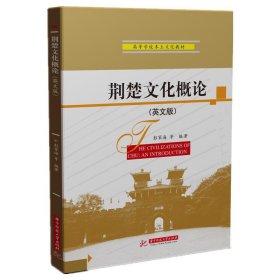
an introduction
正版图书保证 可开电子发票
¥ 11 3.1折 ¥ 36 全新
库存14件
作者彭家海等
出版社华中科技大学出版社
ISBN9787568067294
出版时间2021-04
装帧平装
开本16开
定价36元
货号9787568067294
上书时间2024-05-14
- 最新上架
商品详情
- 品相描述:全新
- 商品描述
-
前言
PrefaceMany readers find it hard to make a good understanding of Tao Te Ching, The Book of Zhuang Zi and Chuci.As is clear to many people, Chinese culture, in its course of evolution, saw the rise and fall of many regional cultures, and among these is the culture of the state of Chu. Since the early men of Chu lived in a mountain named Jing in the midstream of the Han River, “Chu” is often mentioned together with“Jing”, thus Jing-Chu or Chu-Jing. The Civilizations of Chu: An Introduction is meant to provide the reader with a brief account of the cultural achievements made by people who lived in what was the territories of the state of Chu by, firstly, citing the core sections in the classics thereof, secondly, presenting the latest research findings of experts in corresponding fields, and, thirdly, advancing our views on some of the topics discussed.Developed mainly by the men of Chu who came to inhabit more than half of the present 31 provinces, autonomous regions, and municipalities directly under the Central Government (Hubei, Henan, Hunan, Anhui, Jiangsu, Shaanxi, Zhejiang, Shanghai, Jiangxi, Shandong, Guangdong, Guangxi, Yunnan, Chongqing, Guizhou and so on), Chu culture takes on several features.Comprehensiveness: In literature Ch’u Tz’u (Chuci), together with The Book of Songs, serves as the dual ancestry of poetry in China; in philosophy Tao Te Ching is probably the most famous book of philosophy in the East; in art, the music produced by playing the chime bells, the drawings on Chu-style lacquer ware, pieces of embroidery on silk products, sculptures like root carvings, and Chu-style architecture have captured public fancy; in science, bronze casting and astronomy are well-known. Chu culture had reached such a high degree of sophistication that it is by no means whatsoever inferior to the civilizations of ancient Greece and Rome.Profundity in Thought: Rich in abstract thinking, the poems of Qu Yuan and the writings of Zhuang Zi are time-honored classics, and Lao-tzu’s book has been acclaimed the second most translated book in the whole world. Obviously the“barbarous” men of Chu had caught up with the civilized northerners in language art and in philosophical ideas. Since the dynasties of Shang and Zhou are considered to be the classical age in Chinese history, the people of Chu certainly made a big share of contribution to the formation of Chinese culture as a whole. As a result, the cultural achievements in Chu determined the cultural orientation in the early Han dynasty, which is reflected in the Historial Records by Sima Qian.Romanticism: Powerful feelings are expressed and heavy reliance on the imagination is manifest in Lisao—the poet traveling in the celestial realm with supernatural beings—and in the creation of fengs (phoenixes); idealization of nature, and reliance on subjectivity are to be found in the writings of Zhuang Zi; fascination for the remote, the supernatural, and the unusual can lead to a sense of wonder; individualism is exemplified in the lifestyle of Zhuang Zi , Qu Yuan, and others.Openness: In the course of expansion, the men of Chu incorporated other cultures in their own. Having been civilized (their connection with the Xia dynasty), they moved southwards and, surrounded by the barbarous, they chose to live at first in the woods, but different ideas were assimilated into their culture; rooted deeply in Taoism which was mixed with shamanism, Chu culture is eclectic in that the Chu people began to embrace Confucianism, the ideology of the hostile northerners, in the late seventh century B.C.The list could go on. Great civilizations such as those of Chu deserve the study of generations of people. It is our sincere hope that this book can be of some help to readers of Chinese classics both at home and abroad.Peng JiahaiJan 23,2020Afterword( 后 记)为了更好地给高等学校英语专业本科生讲授“楚文化概论”课程,我们决定在教学的基础上编写一本集学术性与通俗性于一体的读物《荆楚文化概论》。编委主要由在荆楚文化方面有浓厚兴趣或一定研究基础的国内几所高校的一线英语教师组成。《荆楚文化概论》的编写工作经历了数个春秋。彭家海教授设计了全书的大纲和结构,并起草了编写说明。全书编写分工如下:田甜副教授编写*章——汉水中游文明 (郧县),黄广芳教授编写第二章——神农架,彭家海教授编写第三章——楚国简史、第四章——道德经与道教(老庄、道教、武当山、黄鹤楼)、第五章——楚国文学、第六章——楚国艺术中的音乐(古琴台与高山流水、金声玉振),刘洋副教授编写第六章——楚国艺术中的漆器,颜研博士编写第七章——长江三峡居民,李池利博士编写第八章——武汉工商业化与辛亥首义。编写工作开始之前,各编著者都收到了比较详尽的编写说明。各部分初稿完成后, 彭家海教授在对初稿进行大幅度修改的基础上就编写要求与其他各位编著者再次沟通; 在对修改稿做进一步修改的基础上又进行了多次编委沟通和书稿调整。书稿完成后,彭家海教授又进行了统稿与通读,然后由美籍友人Diane Berthelot、Albert Earley 等对各编写部分的语言进行把关,*后由彭家海教授定稿。华中科技大学出版社的刘平编辑也付出了辛勤的劳动。借此机会向各位参与者表示衷心的感谢。为了让读者更全面、更深入地了解荆楚文化和中华文明,我们精选了部分知名译者的典籍英译材料,在此一并致谢。由于编者水平有限,书中肯定会有疏漏、谬误之处,肯请读者匡正。为方便教学,编著者还制作了课件,有需要的教师请发邮件到robinpeng7@hot?mail.com 免费索取。编者2020 年2 月
商品简介用英语系统介绍荆楚文化的诸方面,包括楚国历史、哲学、宗教、文学、艺术等以及湖北境内在国内外有巨大影响的自然和人文景观如黄鹤楼、武当山、神农架、三峡等,同时,还与春秋战国时期同时代的国内外区域文化进行比较。
作者简介
目录
Chapter One Civilization in the Midstream of the Han River
Ⅰ. Lead-in questions
Ⅱ. The text
1. Dinosaur Egg Fossils at Qinglong Mountain
2. Turquoise at Yungai Temple (云盖寺)
3. Yunxian Man on Quyuan River (曲远河)
Ⅲ.Questions for discussion
Ⅳ. Sources
Ⅴ. Material for further reading
1. He Shi (an excerpt from Han Feizi)
2. Wan bi gui Zhao (an excerpt from Records of the Historian)
Chapter Two Shennongjia: A Mystery
Ⅰ. Lead-in questions
Ⅱ. The text
1. Natural Beauty in Shennongjia
2. The Origin of Shennongjia
3. Haven for Relict Vegetation and Endangered Animals
4. The Mystery of Savages
Ⅲ. Questions for discussion
Ⅳ. Sources
Ⅴ. Material for further reading
1. Huai Nan Zi (an excerpt)
2. The Book of Master Baopu (excerpts)
3. Huangdi Neijing (an excerpt)
Chapter Three A Brief History of the State of Chu
Ⅰ. Lead-in questions
Ⅱ. The text
1. Bi lu lan lv—The Beginning of the State of Chu
2. Wen ding zhi xin—Early Expansion
3. Yi ming jing ren (一鸣惊人)—Rise to Power
4. Chu cai Jin yong (楚材晋用)—The Frustration of an Empire
5. Qian jin shi gu—Chu’s Heyday
6. Zong heng bai he — Decline of Chu
7. Nan feng bu jing—Fall of Chu
Ⅲ. Questions for discussion
Ⅳ. Sources
Ⅴ. Material for further reading
1.Shijing/The Book of Songs (excerpts)
2. History of the Former Han Dynasty (an excerpt)
Chapter Four Tao Te Ching and Taoism (Philosophy in the State of Chu)
Ⅰ. Lead-in questions
Ⅱ. The text
1. The Lao-Zhuang Thought /Lao Tzu and Chuang Zi
2. Taoism
3. Wudang Mountains
4. The Legend of Yellow Crane Tower
Ⅲ.Questions for discussion
Ⅳ. Sources
Ⅴ.Material for further reading
1. Tao Te Ching (excerpts)
2. The Book of Zhuang Zi (excerpts)
3. “Yellow Crane Tower”
4. “Chuang Tzu, The Monist”
Chapter Five Literature in the State of Chu
Ⅰ. Lead-in questions
Ⅱ. The text
1. Shijing and Chuci
2. An Introduction to Lisao
3. Artistic Achievements in Lisao
Ⅲ.Questions for discussion
Ⅳ. Sources
Ⅴ. Material for further reading
1. Lisao (excerpts)
2. “Heavenly Questions” (an excerpt)
3. “Hymn to the Fallen”
Chapter Six Artistic Achievements in the State of Chu
Ⅰ. Lead-in questions
Ⅱ. The text
1. Guqin Pavilion and Gao shan liu shui
2. Jin sheng yu zhen (金声玉振)
3. Painting, Sculpture and Chu-Style Lacquer Ware
Ⅲ. Questions and topics for discussion
Ⅳ. Sources
Ⅴ. Material for further reading
1. The Story of the Stone (excerpts)
2. Records of the Historian (an excerpt)
Chapter Seven People of the Three Gorges
Ⅰ. Lead-in questions
Ⅱ. The text
1. The Three Gorges (长江三峡)
2. The Three Gorges Dam
3. The Ba People (巴人)
4. Celebrities of the Three Gorges
Ⅲ. Questions for discussion
Ⅳ.Sources
Ⅴ. Material for further reading
1. “Alarm at First Entering the Yangtze Gorges”
2. “Early Departure from Baidi City”
3. “Sze yueh”
4. “Thinking of My Late Wife”
5. Synopsis of Prescriptions of the Golden Chamber (an excerpt)
Chapter Eight Industrialization and Commerization in Wuhan and the 1911 Revolution
Ⅰ. Lead-in questions
Ⅱ. The text
1. The Second Opium War (1856—1860)
2. Hankou Opened as a Business Port
3. Zhang Zhidong and Hanyang Iron & Steel Factory
4. Wuchang Uprising
Ⅲ. Questions for discussion
Ⅳ. Sources
Ⅴ. Material for further reading
The Yi King/The Book of Changes /Classic of Changes (excerpts)
Afterword(后记)
内容摘要
荆楚文化指具有湖北地方特色的文化,是华夏民族文化的重要组成部分,在中华文明发展目前地位举足轻重。本书用英语系统介绍荆楚文化的诸方面,包括楚国历史、哲学、宗教、文学、艺术等,以及湖北境内在国内外有巨大影响的自然和人文景观,如黄鹤楼、武当山、神农架、三峡等。同时,本书还将荆楚文化与春秋战国时期同时代的国内外区域文化进行比较,以期读者对荆楚文化能有更深刻的了解。本书适合英语专业学生使用,也可作为非英语专业学生的拓展教材。
主编推荐
本选题使用规范的术语和英美等国汉学家的英语介绍荆楚人文,语言规范、地道。本选题主要选取荆楚文化中有代表性的老庄哲学、以楚辞为代表的文学、以巫术为代表的宗教,以视觉艺术和音乐为代表的楚艺术,同时介绍武当山道教文化、黄鹤楼名楼文化、神农架自然遗产文化等,区域文化特征明显。
相关推荐
— 没有更多了 —



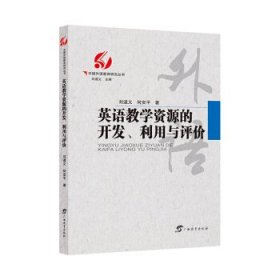
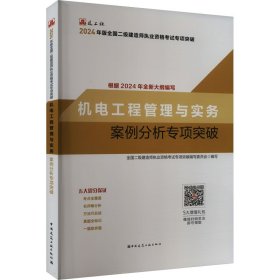

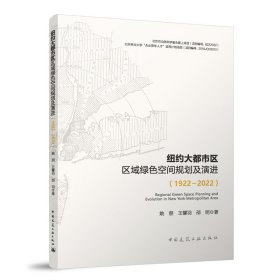
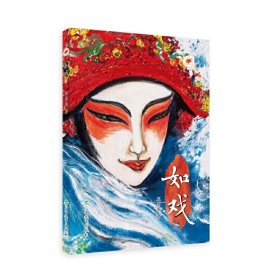


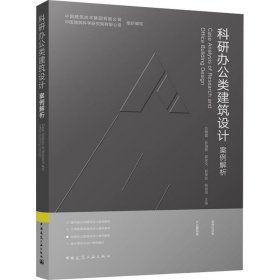


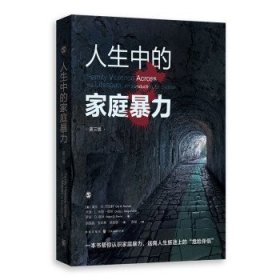


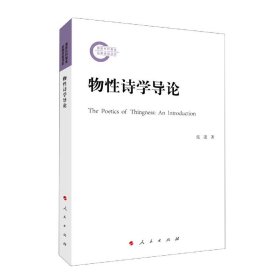



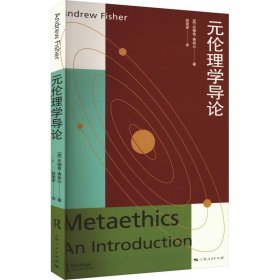

以下为对购买帮助不大的评价